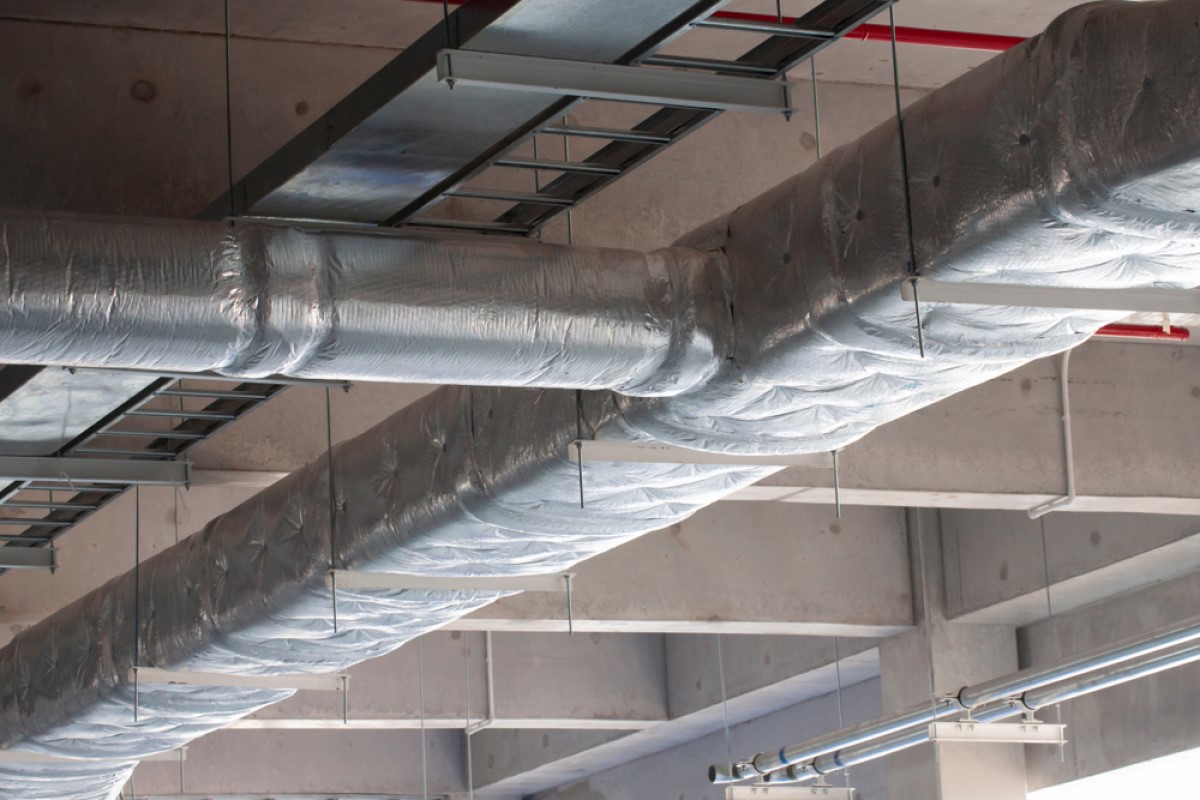

Articles
How To Wrap Ductwork With Insulation
Modified: December 7, 2023
Learn how to properly wrap ductwork with insulation in this informative article. Improve energy efficiency and prevent condensation with these step-by-step instructions.
(Many of the links in this article redirect to a specific reviewed product. Your purchase of these products through affiliate links helps to generate commission for Storables.com, at no extra cost. Learn more)
Introduction
When it comes to maintaining a comfortable indoor environment, proper insulation is crucial. Insulating your home’s ductwork not only helps regulate temperature but also improves energy efficiency. By reducing heat loss or gain, insulated ductwork can lower your heating and cooling costs while ensuring that conditioned air reaches each room effectively.
In this article, we will guide you through the process of wrapping ductwork with insulation. We will delve into the benefits of insulating ducts, the materials you will need, and the steps required to complete the project successfully.
Before we dive into the details, it’s important to note that insulating ductwork is a task that can be completed by most homeowners with basic DIY skills. However, if you’re not comfortable working with HVAC systems or if you have any doubts about your abilities, it’s always best to consult a professional.
Now, let’s explore why insulating your ductwork is so beneficial.
Key Takeaways:
- Insulating your ductwork not only saves energy and improves comfort but also reduces noise, enhances HVAC lifespan, and promotes healthier indoor air quality. It’s a cost-effective investment with long-term benefits.
- Properly preparing, choosing the right insulation, and securing it in place are crucial for a successful ductwork insulation project. Follow safety precautions, consider professional assistance if needed, and maintain regular inspections for optimal performance.
Read more: What Insulation Is The Best For Ductwork?
Benefits of Insulating Ductwork
Insulating your ductwork offers a range of benefits that can greatly enhance the performance and energy efficiency of your HVAC system. Here are some key advantages:
- Energy Savings: Insulated ductwork helps reduce heat loss or gain during the distribution of conditioned air. By minimizing thermal transfer, your HVAC system doesn’t have to work as hard to maintain the desired temperature, resulting in lower energy consumption and reduced utility bills.
- Improved Comfort: Insulated ducts prevent air leakage and temperature variations, ensuring that conditioned air reaches each room in your house evenly. This eliminates hot or cold spots and creates a more comfortable living environment.
- Noise Reduction: Insulation material acts as a sound barrier, reducing the noise generated by the airflow within the ductwork. As a result, you can enjoy a quieter and more peaceful indoor space.
- Enhanced HVAC Lifespan: Insulating ducts can prolong the life of your HVAC system by protecting it from external temperature fluctuations. When the system operates under less stress, it experiences less wear and tear, leading to fewer repairs and a longer lifespan.
- Healthier Indoor Air Quality: Insulated ductwork helps prevent the infiltration of dust, pollutants, and allergens into your living spaces. This is particularly beneficial for individuals with respiratory conditions, as it aids in maintaining cleaner and healthier indoor air quality.
Overall, insulating your ductwork is a cost-effective investment that pays off in energy savings, improved comfort, reduced noise, and better indoor air quality. Now that we understand the benefits, let’s explore the materials you’ll need for this project.
Necessary Materials
Before you start wrapping your ductwork with insulation, it’s important to gather all the necessary materials. Here’s a list of what you’ll need:
- Insulation material: There are several types of insulation suitable for ductwork, including fiberglass, foam board, and reflective foil. Choose the one that best suits your needs and meets the local building codes.
- Insulation tape: This tape is specifically designed for sealing insulation joints and preventing air leakage. Make sure you have enough to cover all the connections and seams.
- Measuring tape: Accurate measurements are crucial for cutting the insulation material to the correct size. Have a measuring tape handy to ensure precise cuts.
- Utility knife: You’ll need a sharp utility knife to cut the insulation material cleanly and efficiently.
- Gloves and safety goggles: It’s essential to protect yourself while working with insulation. Wear gloves to avoid skin irritation and safety goggles to protect your eyes from any loose fibers.
- Protective clothing: Insulation materials can be messy, so wearing long sleeves and pants will help prevent any irritation or itching.
- Duct sealant: In some cases, you may need duct sealant to fill any gaps or cracks in the ductwork before applying the insulation. Check for any leaks or openings and have duct sealant on hand if necessary.
- Step ladder or work platform: Depending on the height of your ductwork, you may need a step ladder or work platform to comfortably reach and work on the ducts.
Once you have gathered all the necessary materials, you’re ready to prepare your ductwork for insulation. In the next section, we will guide you through the necessary steps to ensure a successful installation.
Preparing the Ductwork
Before you can start wrapping your ductwork with insulation, it’s essential to properly prepare the ducts to ensure a clean and effective installation. Follow these steps to prepare your ductwork:
- Clean the ducts: Remove any dust, dirt, or debris from the duct surfaces using a vacuum cleaner or a damp cloth. It’s important to have a clean surface for the insulation to adhere to properly.
- Inspect for leaks: Check the ductwork for any leaks or cracks. Seal any gaps or openings using duct sealant. This step will help improve the efficiency of your HVAC system and prevent air leakage.
- Remove loose insulation: In some cases, you may already have insulation on your ductwork that has become loose or damaged. Remove any old or loose insulation before applying the new insulation material.
- Measure the ducts: Use a measuring tape to measure the length and diameter of each duct. This will help you determine the amount of insulation material you’ll need and the size of the cuts you’ll make.
- Prepare access points: If your ductwork has access points, such as vents or registers, ensure they are accessible and not obstructed. This will make the insulation installation process much easier.
- Plan the insulation layout: Determine the direction and pattern in which you’ll wrap the insulation around the ducts. Planning ahead will help you maintain a consistent and neat appearance.
By properly preparing your ductwork, you’ll create a clean and suitable surface for the insulation installation. Once you’ve completed these steps, you’re ready to move on to the next stage – choosing the right insulation material.
Choosing the Right Insulation
Choosing the correct insulation material for your ductwork is essential to ensure optimal performance and energy efficiency. Here are some factors to consider when selecting insulation:
- Type of insulation: There are various types of insulation available, including fiberglass, foam board, and reflective foil. Each type has its advantages and drawbacks, so consider factors such as R-value, moisture resistance, and fire safety when making your decision.
- R-value: The R-value measures the insulation material’s thermal resistance. The higher the R-value, the better the insulation’s ability to resist heat flow. Choose an insulation material with an appropriate R-value for your climate and energy efficiency goals.
- Duct location: Consider where your ductwork is located. If your ducts run through unconditioned spaces like attics or crawl spaces, you’ll need insulation with a higher R-value to counteract the extreme temperature conditions and prevent heat loss or gain.
- Moisture resistance: Moisture can damage insulation, so choose insulation material that is resistant to moisture. This is especially important if your ductwork is located in areas prone to high humidity or water exposure.
- Fire safety: Ensure the insulation material you select has adequate fire safety ratings. Some insulation materials are naturally fire-resistant, while others require an additional fire-resistant coating.
- Installation ease: Consider the ease of installation for the insulation material you choose. Some types, like pre-cut foam board, may be easier to handle and install, especially if you’re tackling this project as a DIYer.
- Budget: Evaluate your budget and factor in the cost of the insulation material. Choose an option that provides a balance between performance and affordability.
Take the time to research and compare different insulation options before making your final decision. Consulting with a professional or an experienced supplier can also provide valuable insights and recommendations based on your specific ductwork and home requirements.
Now that you’ve chosen the right insulation material, it’s time to move on to the actual process of wrapping your ductwork with insulation. In the next section, we will guide you through each step of the installation process.
When wrapping ductwork with insulation, make sure to use the appropriate type and thickness of insulation for the specific duct material and location to ensure maximum energy efficiency and performance.
Read more: How To Remove HVAC Ductwork
Steps to Wrapping Ductwork with Insulation
Wrapping your ductwork with insulation requires careful attention to detail and proper execution. Follow these step-by-step instructions to ensure a successful insulation installation:
- Measure and cut: Using the measurements you took earlier, cut the insulation material into strips or pieces that are slightly longer than the length of each section of the duct. Use a sharp utility knife to make clean cuts.
- Wrap the insulation: Starting from one end of the duct, wrap the insulation material around the duct in a spiral pattern. Ensure that each wrap slightly overlaps the previous layer to prevent gaps or exposed areas.
- Secure the insulation: Use insulation tape to secure the ends of the insulation and any overlaps. Press down firmly on the tape to create a tight seal and prevent air leakage.
- Continue wrapping: Repeat the wrapping process for each section of the ductwork until the entire length is covered with insulation. Take care to maintain a consistent and smooth appearance throughout the installation.
- Seal any gaps: Inspect the wrapped ductwork for any gaps or openings. If you find any, use insulation tape or duct sealant to seal them effectively. This will ensure that there are no air leaks within the system.
- Insulate fittings and joints: Pay special attention to the connection points, fittings, and joints in the ductwork. Cut smaller pieces of insulation to fit these areas and secure them with insulation tape.
- Label or mark: If desired, label or mark the wrapped ductwork sections for easy identification in the future. This can be helpful for maintenance purposes or if you need to access specific ducts for any reason.
Remember to work carefully during the installation process, ensuring that the insulation material is installed securely and without any gaps or loose ends. Taking the time to wrap your ductwork properly will not only improve energy efficiency but also prolong the life of your HVAC system.
Once you have completed wrapping the ductwork with insulation, the next step is to secure the insulation in place. We will explore this in the following section.
Securing the Insulation
After wrapping your ductwork with insulation, it is crucial to properly secure the insulation to ensure its effectiveness and longevity. Follow these steps to securely fasten the insulation in place:
- Inspect the wraps: Take a close look at each wrapped section of the ductwork and ensure that the insulation is securely in place, without any sagging or gaps.
- Use insulation tape: Apply insulation tape along the seams and overlaps of the insulation. Press the tape down firmly to create a tight seal and prevent any air leakage.
- Secure with zip ties or wire: In addition to insulation tape, you can use zip ties or wire to further secure the insulation. Place them at regular intervals along the length of the duct, ensuring that they are tight enough to hold the insulation in place.
- Consider foil tape: For insulation materials like reflective foil, use foil tape instead of regular insulation tape. This specialized tape is designed to adhere well to foil surfaces and provide an effective seal.
- Avoid compressing insulation: Take care not to compress the insulation excessively, as this can reduce its effectiveness. Allow it to maintain its thickness and air pockets to provide proper insulation properties.
- Check for proper adhesion: After securing the insulation, check to ensure that it is firmly adhered to the ductwork and there are no loose or dangling ends.
- Reinforce around fittings: Pay extra attention to fittings, joints, and connection points. Ensure that the insulation is securely wrapped around these areas and sealed with insulation tape or adhesive.
Properly securing the insulation will ensure that it remains in place, providing optimal energy efficiency and preventing any air leakage. Additionally, it will help maintain the integrity of the insulation over time.
With the insulation securely fastened, you are well on your way to reaping the benefits of a well-insulated ductwork system. However, there are a few additional tips and tricks that can further enhance the insulation’s performance, which we will explore in the next section.
Additional Tips and Tricks
While wrapping and securing your ductwork with insulation, here are some additional tips and tricks to consider to ensure a successful installation:
- Inspect for existing insulation: Before starting the insulation process, check if your ductwork already has insulation. If it does, assess its condition. If the existing insulation is damaged or inadequate, it may be necessary to remove and replace it.
- Properly seal connections and joints: Use duct sealant or foil tape to seal connections, joints, and seams in your ductwork. This will further enhance the insulation’s effectiveness by preventing air leakage and improving energy efficiency.
- Consider professional assistance: If you are unsure about tackling the insulation project yourself or if your ductwork is complex, it may be wise to seek professional assistance. HVAC professionals have the expertise and specialized tools to ensure a high-quality insulation installation.
- Take safety precautions: Always wear protective gloves, safety goggles, and long sleeves when working with insulation. This will protect your skin from potential irritants and prevent loose fibers from entering your eyes.
- Maintain access points: Ensure that access points like vents or registers remain clear and unobstructed after insulating the ductwork. This will allow for proper airflow and easy access for future maintenance or inspections.
- Regularly inspect the insulation: Periodically check the insulation around your ductwork to ensure its integrity. Look for signs of damage, such as tears or displacement, and repair or replace the insulation as necessary.
- Keep insulation away from heat sources: Ensure that the insulation material is not in direct contact with heat sources, such as furnaces or exhaust vents. This can reduce the insulation’s effectiveness and pose a fire hazard.
- Consider insulating other components: In addition to your ductwork, consider insulating other components of your HVAC system, such as pipes and water heaters. This will help improve overall energy efficiency and prevent heat loss or gain.
By incorporating these tips and tricks into your insulation project, you can enhance the performance and longevity of your ductwork insulation. Remember, proper installation and maintenance are key to reaping the full benefits of insulation for your HVAC system.
With the insulation project complete and these helpful tips in mind, you can now enjoy a more comfortable and energy-efficient home environment. In the next section, we will conclude this article with a brief summary.
Conclusion
Wrapping your ductwork with insulation is a valuable investment that can greatly enhance the performance and energy efficiency of your HVAC system. By reducing heat loss or gain and improving airflow, insulated ducts help maintain a comfortable indoor environment while reducing energy consumption and utility costs.
In this article, we have explored the benefits of insulating ductwork, the necessary materials, and the step-by-step process for wrapping ductwork with insulation. We have also provided additional tips and tricks to ensure a successful installation.
Insulating your ductwork offers several advantages, including energy savings, improved comfort, noise reduction, prolonged HVAC lifespan, and better indoor air quality. By choosing the right insulation material and properly securing it, you can optimize the performance of your ductwork and enjoy a more efficient and comfortable home environment.
Remember to always follow safety precautions, such as wearing protective gear and consulting professionals if needed. Regularly inspect the insulation to ensure its integrity and make any necessary repairs or replacements.
By taking the time to properly insulate your ductwork, you are not only improving the efficiency of your HVAC system but also contributing to a greener and more sustainable home. Enjoy the benefits of a well-insulated ductwork system and reap the rewards of energy savings and enhanced comfort.
Thank you for reading, and we hope this article has provided you with valuable insights and guidance for wrapping your ductwork with insulation.
Frequently Asked Questions about How To Wrap Ductwork With Insulation
Was this page helpful?
At Storables.com, we guarantee accurate and reliable information. Our content, validated by Expert Board Contributors, is crafted following stringent Editorial Policies. We're committed to providing you with well-researched, expert-backed insights for all your informational needs.
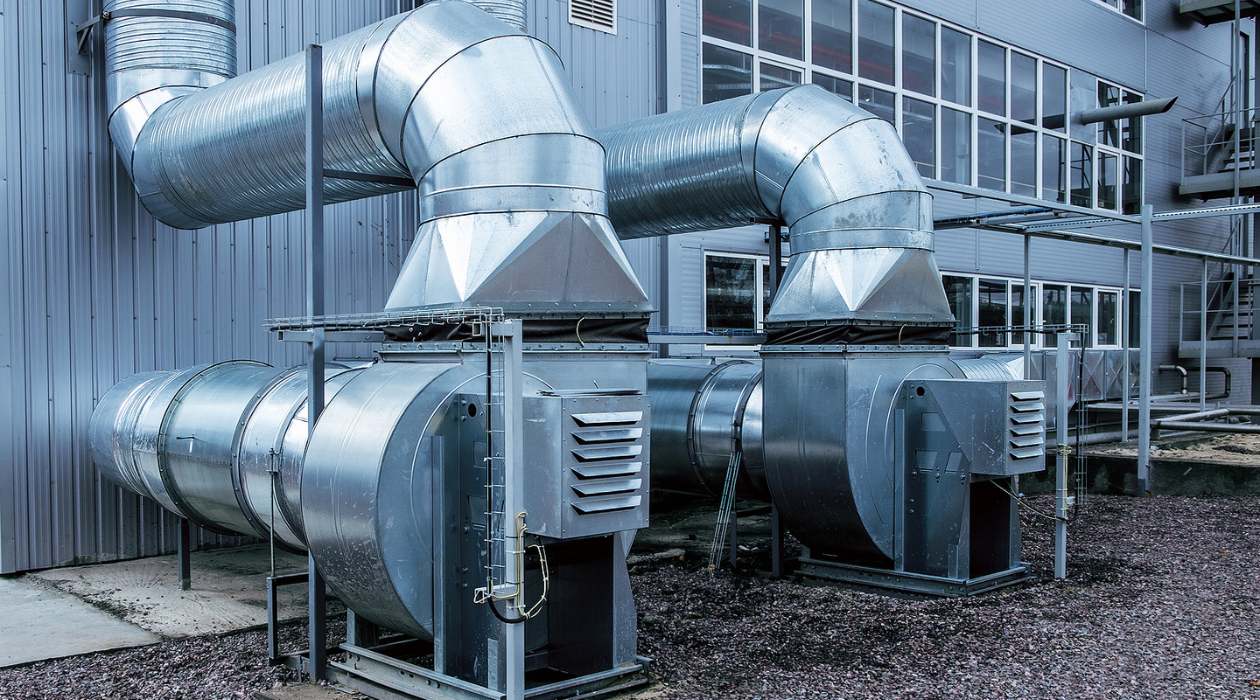
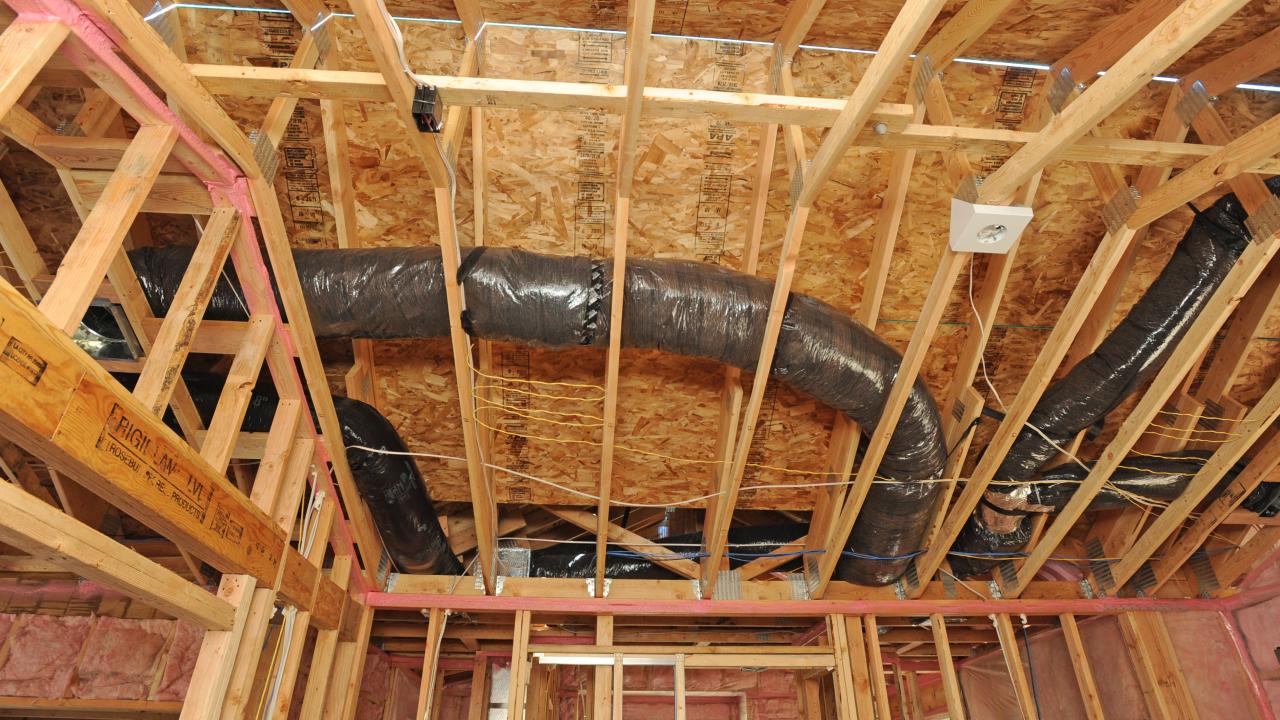

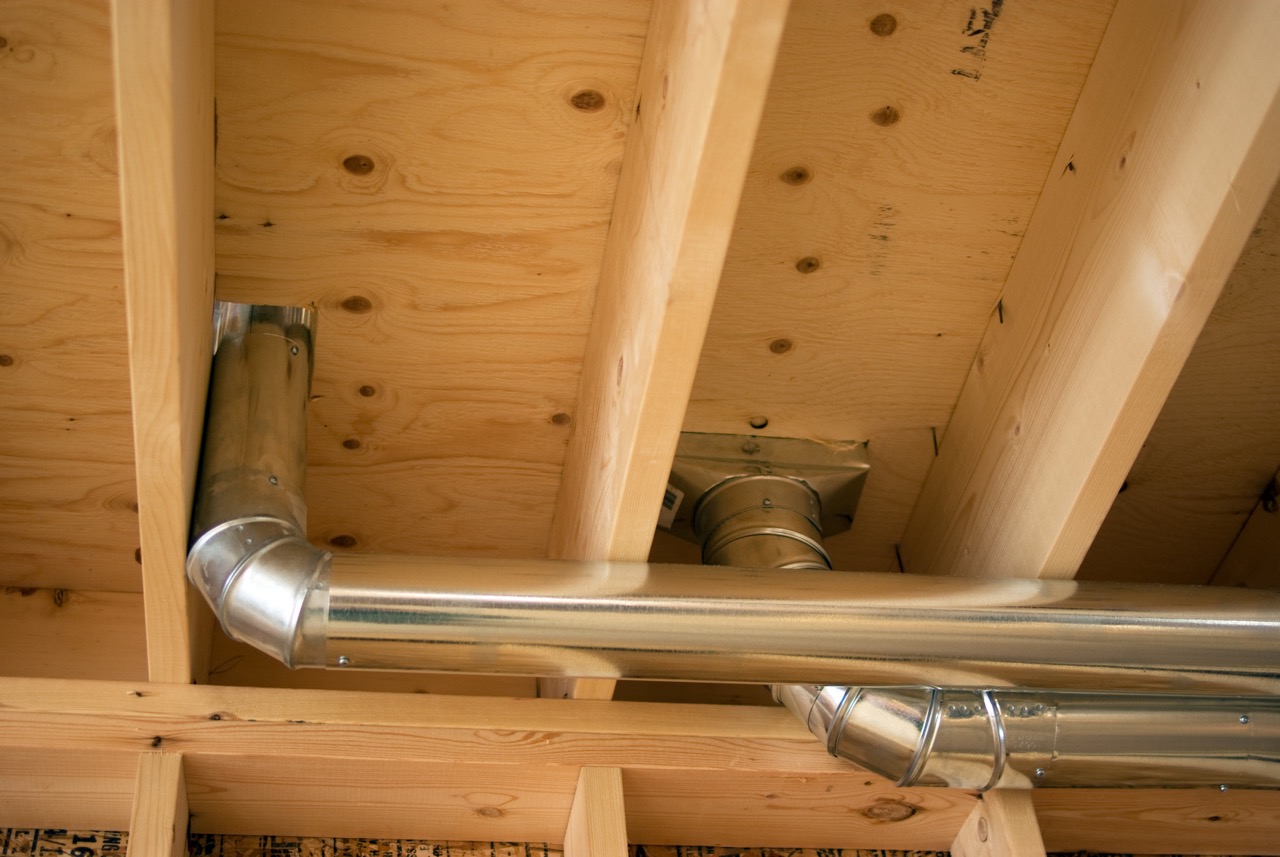
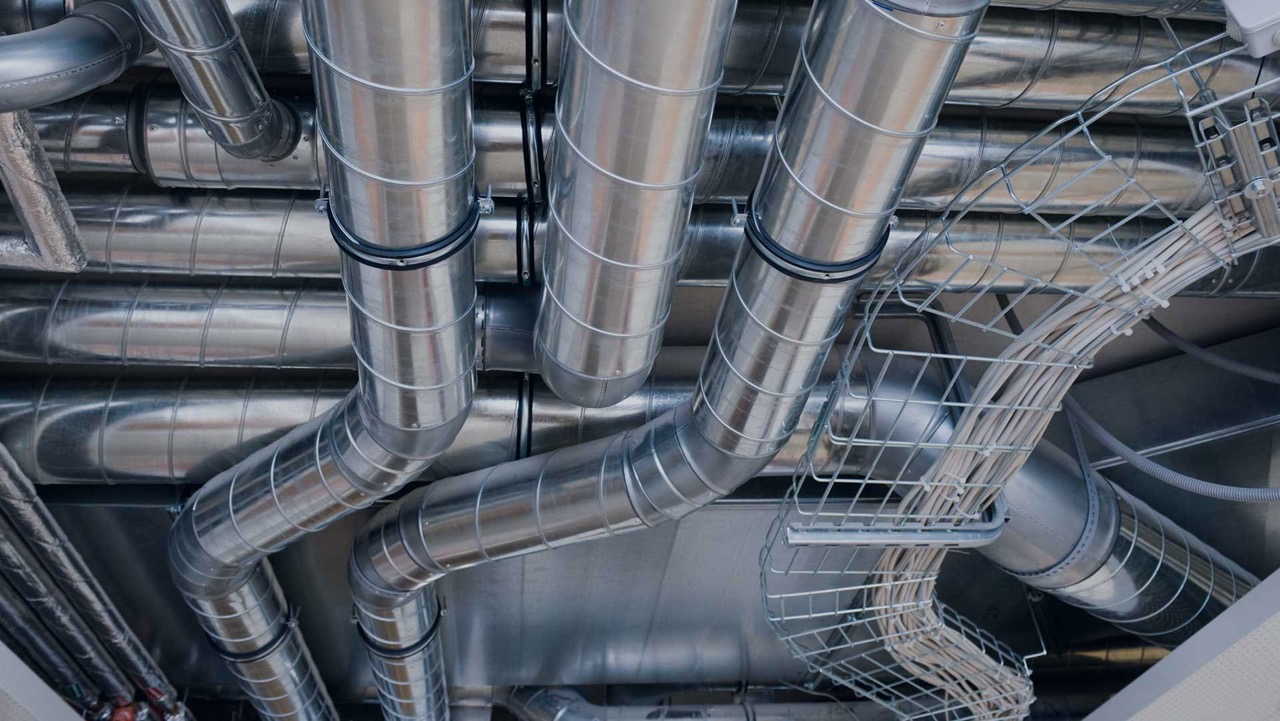
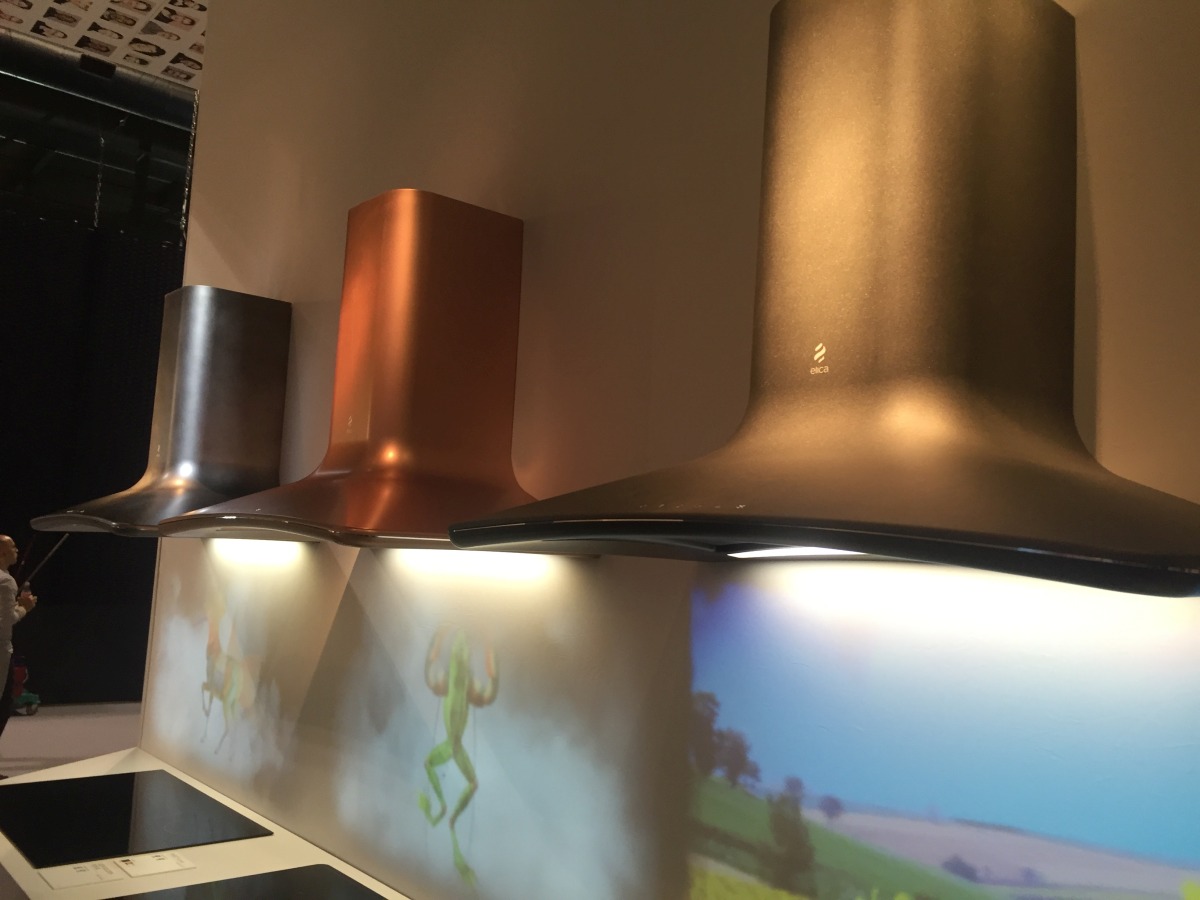


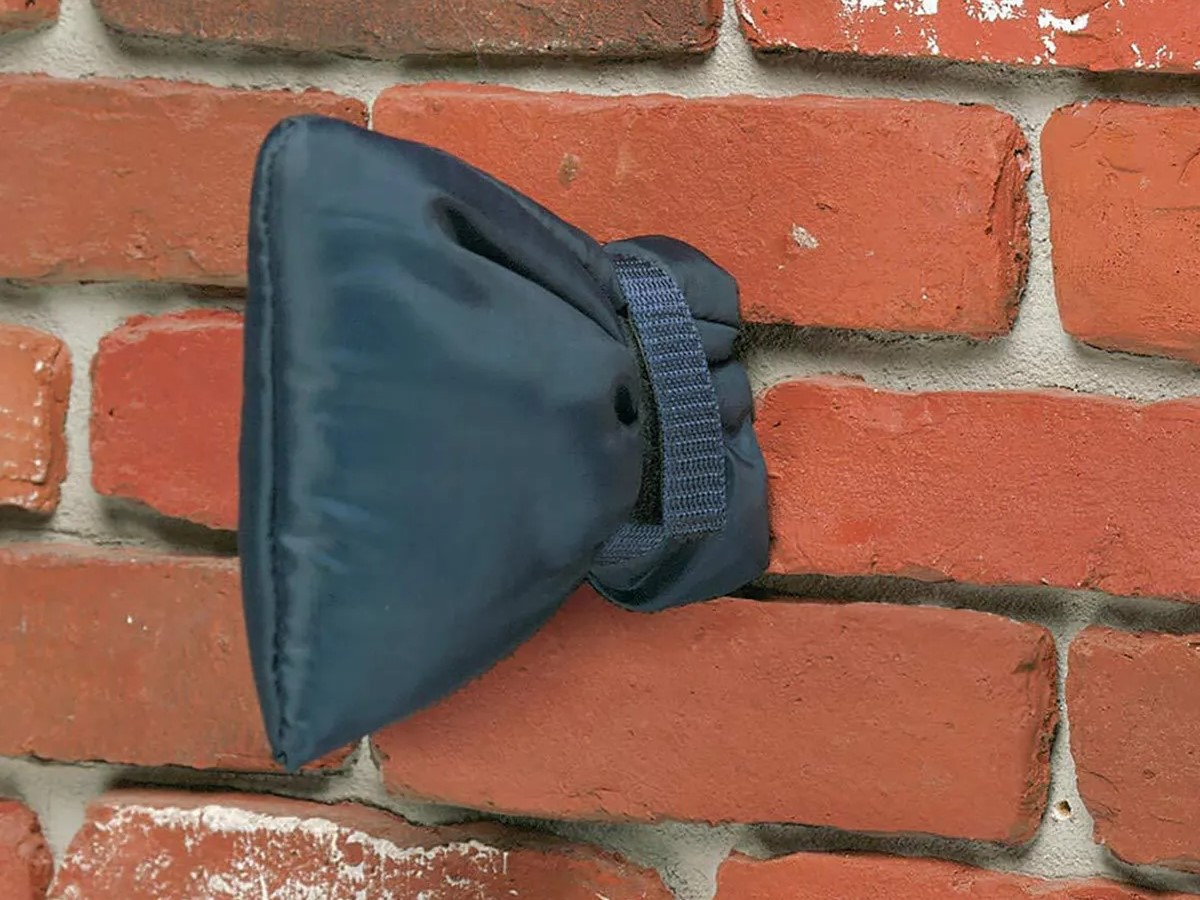
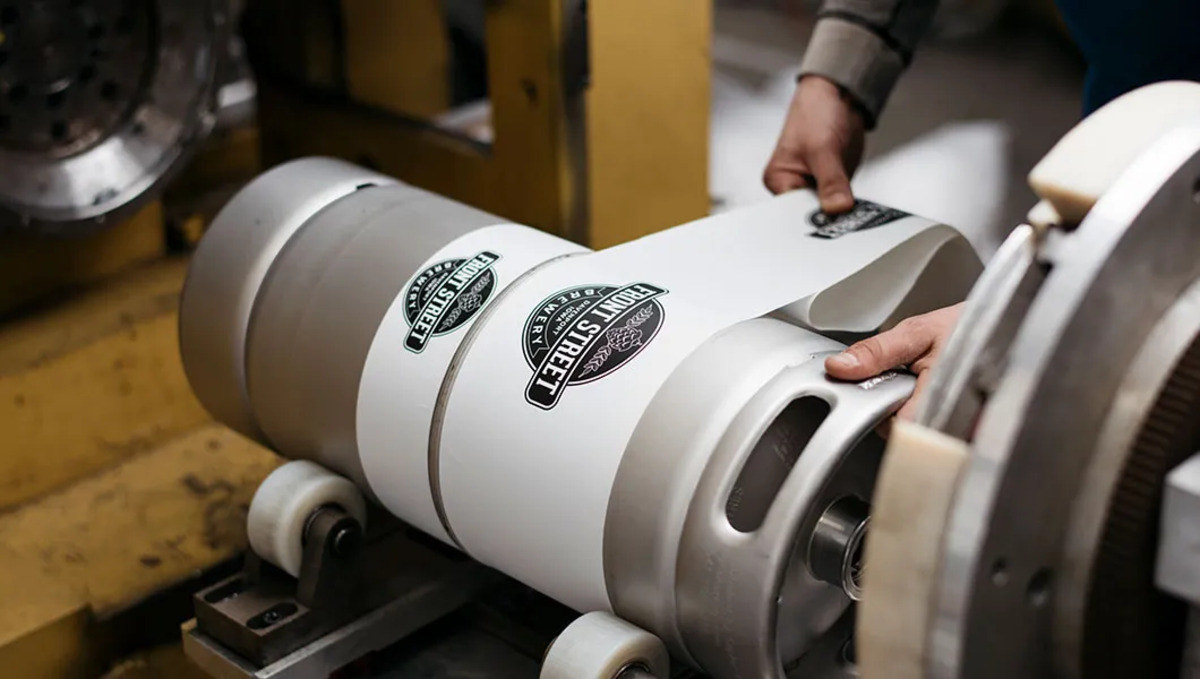

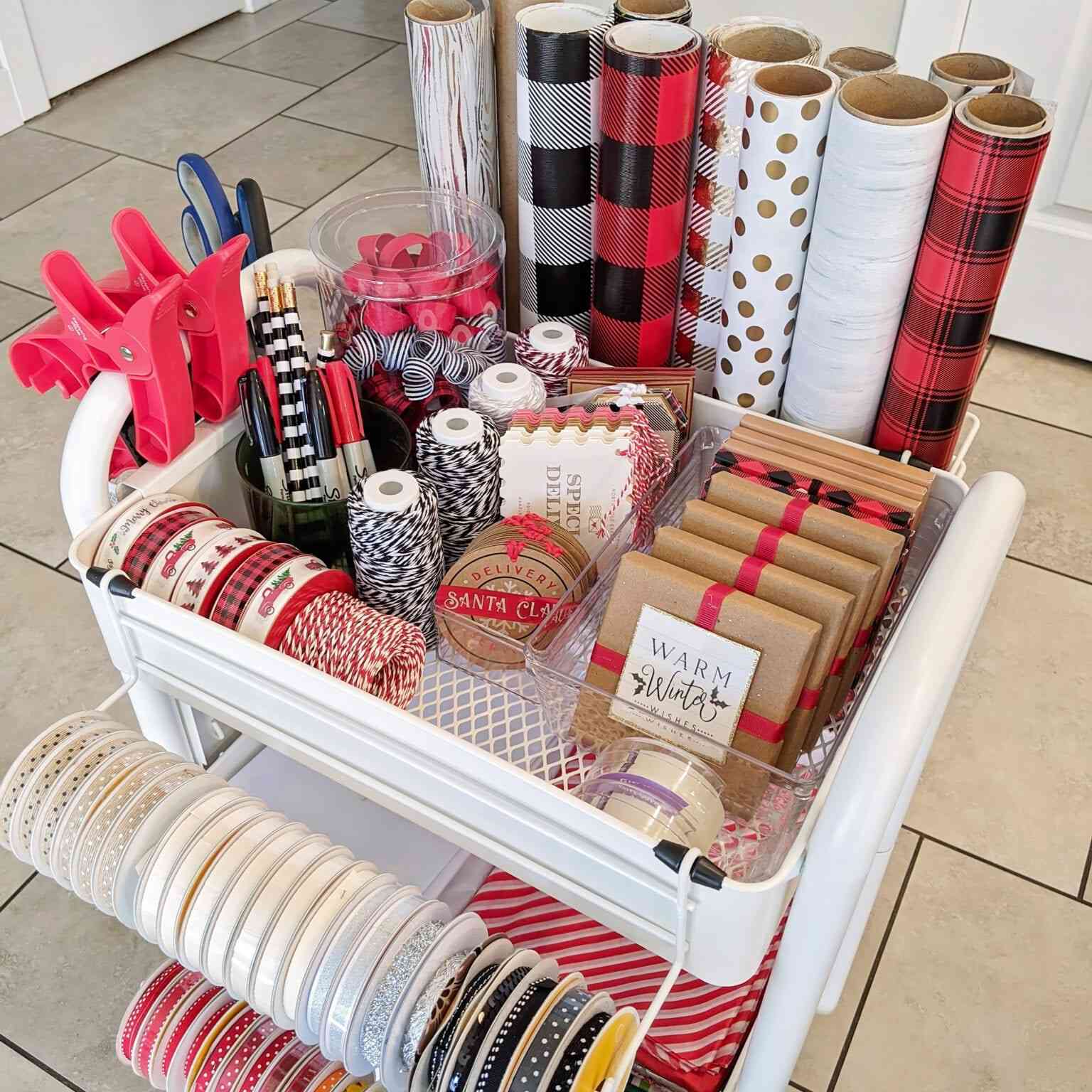

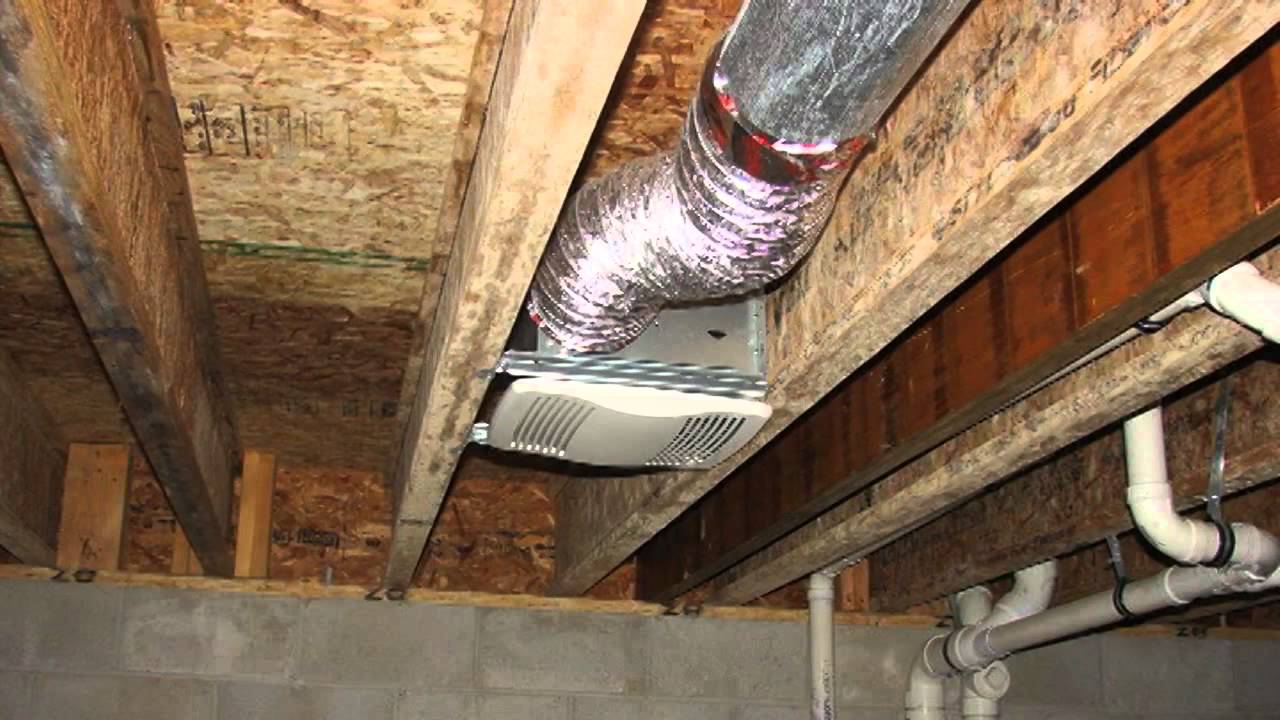

0 thoughts on “How To Wrap Ductwork With Insulation”